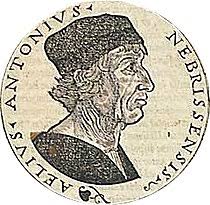English Literature --- master degree Rewriting the Victorian novel in postcolonial times
Course objectives Content Since Gayatri C. Spivak’s “Three
Women's Texts and a Critique of Imperialism”
(1985) and Edward Said’s Culture and Imperialism (1993), the
notion of rewriting has become central to postcolonial literary theory; and
while this approach has been criticized for its failure to debunk the cultural
authority of the mother country, English literary ‘masterpieces’ remain a
privileged source of material for contemporary productions intending to expose
the central role of the Empire in received notions of British identity both at
home and abroad. PRIMARY TEXTS 1. Setting the tone for postcolonial rewritings -
Charlotte
Brontë, Jane Eyre (1847), any
unabridged edition -
Jean Rhys, Wide Sargasso Sea (Harmondsworth;
Penguin Books, [1968] 2000) 2. The
legacy of the Middle Passage -
Emily Brontë, Wuthering Heights (1847), any unabridged
edition -
Caryl Phillips, The Lost Child (Richmond: Oneworld, 2015) 3. The
land down under -
Charles Dickens, Great Expectation (1861), any unabridged
edition -
Peter Carey, Jack Maggs (London: Faber and Faber,
1998) 4. Explorers
and migrants -
Joseph Conrad, Heart of Darkness (1899), any unabridged
edition -
David Dabydeen, The Intended (London: Seeker, 1991) REFERENCE BIBLIOGRAPHY This section will be updated during the program. Reading material will be uploaded here each week as course assignment. Said, Edward W., Culture and Imperialism (London:
Chatto & Windus, 1993) Spivak, Gayatri C., “Three
Women’s Texts and a Critique of Imperialism”, Critical Inquiry 12.1 (Autumn, 1985), pp. 243-261.
This course aims at making the tools offered by cultural and postcolonial
studies operative in a diachronic perspective, by focusing on the literary
canon and its persistence as authoritative discourse in contemporary writing in
English. Instead of focusing exclusively on contemporary works, students will
be required to confront the traditional notion of ‘literary text’ and assess
whether and how it has been confirmed and/or dismantled by postcolonial
appropriations. Coursework will focus on novels from the Victorian period and
their respective rewritings (in writing as well as on screen) by authors from
the expanding postcolonial canon to explore the role of renarration in
consolidating, renovating, and/or contesting literary traditions.
Starting from arguably the
first rewriting to tackle the issue of what Stuart Hall has called the “work”
of the colonial moment in literature, Jean Rhys’s Wide Sargasso Sea, students will research and analyze some
Victorian novels and their postcolonial adaptations, in order to develop an
analysis of the use of source material and its interaction with contemporary elements.
The students will thus perfect the instruments of literary theory and criticism
while at the same time articulate an original reading of the work chosen for
their final presentation. The final presentation will include both a short
essay and an oral presentation and discussion with the class and teacher.
- Docente: SERENA GUARRACINO

Historia de la gramática española: morfología
El
curso presenta un doble objetivo: por una parte, esbozar una visión de conjunto
de la tradición gramatical española desde el siglo XV hasta el siglo XIX,
destacando las principales ideas gramaticales, convergentes y divergentes, en dicha
tradición; por otra, y partiendo del análisis de cuestiones generales como la
definición de gramática y sus partes,
estudiar las diferentes partes de la oración o clases de palabras descritas en los
capítulos dedicados a la morfología de las gramáticas objeto de estudio,
dedicando especial atención a la más rica y a la que los gramáticos conceden
mayor espacio en sus obras: el verbo.
No faltarán reflexiones en torno a dicha categoría gramatical: definición,
tipología, accidentes, etc. Se pretende, por lo tanto, que las alumnas y
alumnos estudien y conozcan la gramática del español tanto desde una
perspectiva científica como pedagógica.
El corpus que se utilizará durante el curso está compuesto por las principales gramáticas de la lengua española de los siglos indicados anteriormente: desde la Gramática de la lengua castellana (1492) de Nebrija, pasando por las de Jiménez Patón (1614), Gonzalo Correas (1626) y Juan Villar (1651) del siglo XVII, la Gramática de la lengua castellana (1771) de la RAE, hasta llegar a las de Vicente Salvá (1831) y Andrés Bello (1847) en el siglo XIX.
- Docente: JUAN CARLOS BARBERO BERNAL